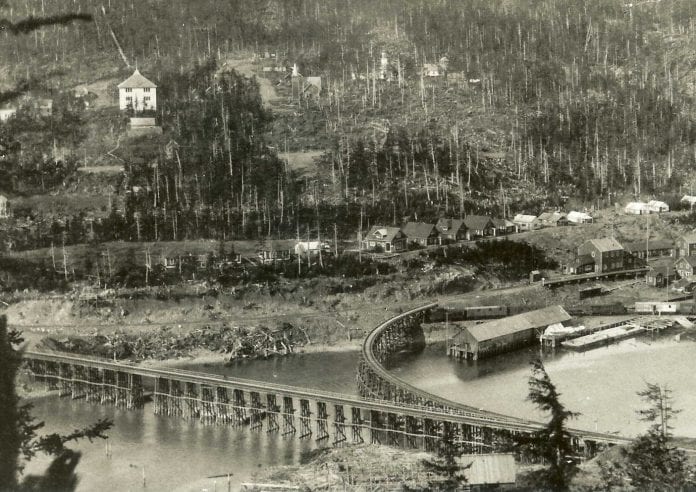In the early days of construction of the Copper River and Northwest Railway, the company property in Cordova included two office buildings, a hospital, two storehouses, one 11-stall roundhouse, one cinder pit barn, one galvanized iron warehouse and a general shop building which included a machine shop, paint shop, car shops and power plant. The equipment in the shops was adequate enough to service all the rolling stock used in the railroad operations and the large wharf adjoining the shop allowed for deliveries directly from barges to railroad cars.
The company also provided housing by building a number of cabins along a street that became known as Railroad Row. These cabins were used by the superintendents and were all connected by a series of boardwalks to help avoid the muddy streets. The unmarried workmen were housed in large bunkhouses near the old cannery/headquarters site. Heney established a hospital in the old cannery buildings to serve the railroad crews.
This photo came from the archives and collections of the Cordova Historical Society housed within the museum. The museum is open 10 a.m. to 5 p.m. Tuesday through Friday, and noon to 5 p.m. Saturdays. Stop by to see our new exhibit in the Copper River Gallery, “Winter White” featuring all local artists.














